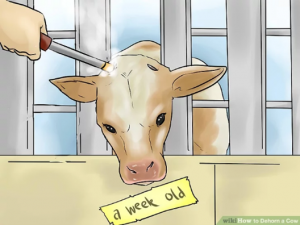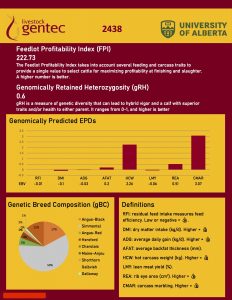We started this look at gene editing and livestock in our April 2022 edition with a question from Kajal Devani “in view of supply chain issues, labour shortages, food shortages, war and climate change… Are these products coming to market too soon or not soon enough?”
It looks as if the regulatory environment is leaning towards approving the introduction of gene-edited livestock. Against all the problems Kajal identifies, surely this is the correct approach. Providing sufficient high-quality food from fewer and fewer resources is an achievement that agriculture should be proud of, therefore should we not continue to adopt new technologies that can help meet the growing challenges we face? This is the position taken by those advocating the rapid introduction of gene edited animals: the challenges we face are too large, we need to address them quickly before they get even worse.
So am I more cautious than Kajal as to whether it is too soon or not soon enough? Am I against using gene editing in livestock or am I concerned about the safety of the technology? My answer to both is No. Instead, I’m concerned that we haven’t learnt ANY lessons from the introduction of genetically-modified organisms, and we should try to win public support for these products before they enter the marketplace. The proponents of gene editing argue that the technology is precise and different from genetic modification. If the public understands this, then they will accept the next wave of developments. (I believe this argument is based on the discredited “information deficit model” of science communication so unlikely to work.)
I don’t think we need to rush to introduce gene-edited animals when we can focus on increasing consumer acceptance and explaining their potential benefits for consumers and the animals themselves. This effort should not be about the technical differences between gene editing and genetic modification – the differences are small and are often presented incorrectly [see GE tomatoes on the BBC]. This approach is particularly ineffective and, when the explanation is oversimplified, it opens the door for campaigns against gene editing as it can be claimed to be misleading.
We’ve seen that consumers don’t necessarily embrace the use of novel technology to improve company or farmer profits. What else may resonate with the public? Do climate change and food shortages change the debate? What about protecting animals from disease and reducing the use of antimicrobials in food production (to help reduce antimicrobial resistance) or improving animal welfare? How do these align with public values, a more powerful approach than the information deficit model?
That said, examples that benefit animal welfare such as gene-editing dairy cows to remove the need for painful dehorning, should also be chosen very carefully (see our companion piece on this by Niloofar Pejman). A report on gene-editing of animals in the UK acknowledges that the technology has the capacity to bring “real benefits”. But Elizabeth Cripps from Edinburgh University, a member of the group that produced the report, said that it could also make things worse. “Genome editing could be used to perpetuate or possibly increase the dense stocking of animals in industrialised (production).”
I recall this argument from animal welfare groups many years ago when we were looking to select for reduced aggression in livestock. That’s why we should take social licence in animal breeding and the application of new technologies very seriously, whether genomics, genetic modification or gene editing. Reducing aggression in farmed animals has benefits for animal welfare as well as worker welfare just as we see for polled/hornless cattle. Selecting for animals that are less fearful of man (domestication) has provided multiple benefits, from a more sustainable food supply to the emotional support provided by companion animals. Selecting for females only also has tremendous animal welfare benefits. However, without proper codes of practice, we could also see negative outcomes as those proposed above.
In this newsletter, we introduce the work taking place to remove the need for dehorning many of the dairy cows in Canada and elsewhere. This seems like a very positive application, and a model for regulating and introducing gene-edited animals. There are very careful studies to show the absence of unintended consequences of this gene edit – the milk and eggs from these animals are indistinguishable from those produced from existing cows. So what’s the concern? Well, the strongest argument for de-horning cows by gene editing is economic. It’s perfectly do-able without gene editing simply by crossing dairy cows with naturally polled bulls: all the progeny will be hornless/polled. In other words, we have a simple alternative that doesn’t require new technology. The problem for the dairy industry is that this simple alternative would reduce milk production and increase costs.
The scientific committee reviewing the code of practice for the welfare of dairy cows in Canada identifies a number of public concerns, including dehorning. Does this suggest the public will welcome gene-edited cows even though there’s an alternative? Another example is one of the edits that Kajal introduced in her article (see link above), gene-edited cattle that are more heat tolerant. Again, this has animal welfare and production benefits (animals stop eating and producing when they are heat-stressed). But here, too, we have an alternative. The “slick” gene (or more correctly, “allele”) can be introduced into Canadian breeds from breeds where the mutation arose. There are already animals on the ground in Alberta that include “slick” produced in this way. A comment from one announcement of the approval of this gene edit in the US read, “we have been introgressing slick coat into composite cattle for 15 years…..It seems crazy to convince customers [of] the benefits of CRISPR [ ] when the benefits already exist naturally…….That is simply science [ ] for science sake.”
Exactly right! we should always ask whether there is an alternative approach and not just apply technology because we can. Headlines such as “Gene-edited cows just secured record-fast FDA approval” don’t help. As Aesop’s fable indicates “slow and steady wins the race.” Surely, this maxim applies in the case of gene-edited cattle.
Graham Plastow, CEO, Livestock Gentec







